
Consumer Insights
Uncover trends and behaviors shaping consumer choices today
Procurement Insights
Optimize your sourcing strategy with key market data
Industry Stats
Stay ahead with the latest trends and market analysis.
The Expert Market Research report, titled “Non-Abrasive Scrubbing Powder Manufacturing Plant Project Report 2025 Edition: Industry Trends, Capital Investment, Price Trends, Manufacturing Process, Raw Materials Requirement, Plant Setup, Operating Cost, and Revenue Statistics” includes various aspects that are critical for establishing a non-abrasive scrubbing powder plant. These include infrastructure requirements, transportation requirements, utility specifications, and financial and economic analysis, among others.






The demand for non-abrasive scrubbing powder is increasing due to consumer preference for products that are gentle and safe for various surfaces. Non-abrasive scrubbing powders meet this demand by effectively cleaning without causing damage, making them suitable for delicate materials like stainless steel, ceramic, and glass. Also, as disposable incomes rise, consumers are increasingly inclined to invest in high-quality cleaning products for their households and commercial spaces. In 2024, India's total disposable personal income is projected to reach approximately 317.13 trillion INR, which will reflect a significant increase from 296.38 trillion INR in 2023 and can affect market growth too. With around 300 million households in India, residents are demanding quality cleaning products as part of their household management strategies. Additionally, the commercial real estate sector is expanding, with estimates indicating around 1.5 million commercial properties across various sectors such as retail, hospitality, and offices. This growing number of households and commercial properties underscores the increasing market demand for non-abrasive scrubbing powders.
Other elements to consider while establishing a non-abrasive scrubbing powder plant include raw material sourcing, workforce planning, and packaging. The production of non-abrasive scrubbing powder relies on several key raw materials that are essential for creating effective cleaning formulations. Anionic surfactants are crucial for reducing surface tension and enhancing the cleaning power of the scrubbing powder, helping to break down grease and dirt for easier stain removal. Sodium carbonate, commonly known as soda ash, acts as a cleaning agent that softens water. Sodium bicarbonate, or baking soda, serves as a mild abrasive and deodorizer. Fly ash is often used as an abrasive agent due to its fine texture. Processed clay is added to improve abrasive action. Additionally, sodium chloride (common table salt) is included to enhance the formulation's properties and stability. These raw materials create a non-abrasive scrubbing powder that effectively cleans various surfaces.
Moreover, to help stakeholders determine the economics of a non-abrasive scrubbing powder plant, project funding, capital investments, and operating expenses are analyzed. Projections for income and expenditure, along with a detailed breakdown of fixed and variable costs, direct and indirect expenses, and profit and loss analysis, enable stakeholders to comprehend the financial health and sustainability of a business. These projections serve as a strategic tool for evaluating future profitability, assessing cash flow needs, and identifying potential financial risks.
Non-abrasive scrubbing powder is designed for effective cleaning without damaging surfaces, making it ideal for delicate materials like stainless steel, ceramic, and glass. The market for these products has grown due to increasing consumer awareness of environmental issues and a preference for eco-friendly, non-toxic cleaning solutions. Historically, abrasive powders have been used since ancient times for cleaning purposes, with notable developments in the late 19th century. For instance, Bon Ami was introduced in 1886 as a gentler alternative to harsher quartz-based powders. Modern formulations typically contain biodegradable ingredients that reduce health risks associated with traditional cleaners, such as respiratory issues and skin irritations. Today, these powders have become an essential tool for kitchen and household cleaning.
Non-abrasive scrubbing powders contain about 80% insoluble abrasive materials, such as baking soda or calcium carbonate, which help in lifting grime. Additionally, they include a soluble base, usually sodium carbonate, making up approximately 18% of the formulation. The remaining 2% consists of detergents, often anionic surfactants, which enhance grease removal. These powders are resistant to a wide range of cleaning agents, withstanding pH levels from 3 to 11, making them suitable for use with various detergents and solvents. They exhibit low reactivity with common household cleaners.
The manufacturing process of non-abrasive scrubbing powder begins with the mixing of raw materials, including oleum, soda ash, and water, in a slurry mixer to create a thick acid slurry. This slurry is then combined with sodium hypochlorite and sodium hydroxide to form the desired sulfonate slurry. Additional ingredients such as dolomite powder and trisodium phosphate are incorporated into this mixture, which is held in a tank for further processing. Next, the slurry is pumped into an evaporating tower where water is removed, converting it into a dry powder. Finally, the dried powder undergoes filtration to eliminate large particles before being mixed with oxidisers and stored for packaging.

Read more about this report - REQUEST FREE SAMPLE COPY IN PDF
Below is a process for making non-abrasive scrubbing powders:
1. Ingredients and Formulation
The primary ingredients involved in the formulation of non-abrasive scrubbing agents include:
2. Surfactants
Surfactants reduce surface tension and allow the scrubbing agent to remove dirt, grease, and oils effectively. One common surfactant used is Sodium Lauryl Sulfate (C12H25NaO4S).
The industrial production of Sodium Lauryl Sulfate (SLS) involves the following reaction:
C12H25OH + H2SO4 → C12H25OSO3H + H2O
The resulting compound is then neutralised with sodium hydroxide (NaOH):
C12H25OSO3H + NaOH → C12H25OSO3Na + H2O
3. Solvents
Water (H2O) is the most common solvent used in the formulation, but other solvents such as ethanol (C2H5OH) can also be added to enhance the dissolving capability of certain ingredients.
4. Mild Acids and Bases
Citric acid (C6H8O7) is often used to balance the pH of the scrubbing agent. Sodium bicarbonate (NaHCO3) may also be used to create a mild abrasive reaction in combination with citric acid:
C6H8O7 + 3NaHCO3 → Na3C6H5O7 + 3CO2 + 3H2O
This reaction releases carbon dioxide (CO2) gas, which aids in the scrubbing process.
5. Enzymes
In some formulations, enzymes such as protease (which breaks down proteins) are added to enhance cleaning effectiveness. The enzymatic reaction typically involves the breakdown of protein-based stains into smaller peptides or amino acids:
Protein + H2O → Peptides + Amino Acids
6. Final Product and Packaging
After all ingredients are blended and mixed to the desired consistency, the non-abrasive scrubbing agent is bottled or packaged in suitable containers for distribution.
The non-abrasive scrubbing powder market is driven by a variety of applications across household cleaning, food service, automotive, and healthcare sectors. In the household sector, non-abrasive scrubbing powder are essential for cleaning delicate surfaces without scratching, making them popular for washing dishes and countertops. The food service industry relies on this powder for effective dishwashing and kitchen sanitation, where they help remove stubborn food residues while protecting glassware. Additionally, in the automotive sector, non-abrasive scrubbing powder are used for cleaning and polishing vehicles, while the healthcare industry uses them for maintaining sterile environments in hospitals. The increasing awareness of hygiene and cleanliness has further fuelled demand for effective cleaning tools, driving growth in the market.
A detailed overview of production cost analysis that evaluates the manufacturing process of non-abrasive scrubbing powder is crucial for stakeholders considering entry into this sector. Furthermore, stakeholders can make informed decisions based on the latest economic data, technological innovations, production process, requirements of raw materials, utility and operating costs, capital investments by major players, pricing strategies, and profit margins. One significant innovation is the introduction of next-generation non-woven abrasives, which use advanced bonding chemistry and grain technology. These products provide a faster cut rate and longer life while reducing rework due to smearing. For example, high-performance grains such as ceramic alumina have been integrated into non-woven products, allowing for improved cutting efficiency and durability. This innovation enables manufacturers to achieve a consistent, uniform finish on various surfaces, including delicate materials like stainless steel and glass, without causing damage.
Additionally, companies like Premix have developed eco-friendly cleaning compounds such as the PRE-PRG purging compound, which uses natural fibres to clean machine lines effectively. This product not only reduces downtime but also enhances product quality during colour and grade changes. Moreover, techniques such as fluid and spouted bed processing allow for tailour-made particle design, resulting in powders with specific sizes and surface structures. These technological innovations are leading to development of safer, more effective, and environmentally friendly cleaning solutions in the non-abrasive scrubbing powder market.
Below are the sections that further detail the comprehensive scope of the prefeasibility report for a non-abrasive scrubbing powder production plant:
Market Dynamics and Trends: Factors like rising demand from food service industries are significantly affecting market conditions in the non-abrasive scrubbing powder sector. There is an increasing emphasis on hygiene and cleanliness, particularly in food processing plants where maintaining sanitary conditions is critical. This heightened focus on food safety is driving food processors to invest more in effective cleaning solutions, such as non-abrasive scrubbing powders. There over 41,000 registered processing units in India alone and as food processors ramp up operations, the reliance on non-abrasive scrubbing powders for cleaning protein-based soils, fats, oils, dust, and powder residues is likely to grow. These products also ensure compliance with stringent food safety regulations, making them a vital component of modern food processing practices. Understanding these factors helps businesses align their production plans with demands and trends in the non-abrasive scrubbing powder market.
Profiling of Key Industry Players: Leading manufacturers included in the non-abrasive scrubbing powder report are 3M, Colgate-Palmolive, and Procter & Gamble (P&G). Recently, 3M has introduced innovative products under its Scotch-Brite brand, such as the Scotch-Brite Zero Scratch Scrub Sponge. Colgate-Palmolive has also expanded its offerings with eco-friendly non-abrasive cleaning solutions that focus on safety and effectiveness, targeting both household and commercial markets. These companies exemplify the competitive landscape of the non-abrasive scrubbing powder market.
Economic Analysis: Capital expenditure (CAPEX) analysis provides stakeholders the knowledge about required investments in advanced technologies, efficient machinery, and necessary infrastructure. Investing in high-capacity mixing equipment, such as a continuous mixer or high-shear mixer, can improve production efficiency by 20-30%. Investing in energy-efficient systems, such as combined heat and power (CHP) systems could reduce energy consumption by up to 30%, as these systems use waste heat from production processes to generate electricity and provide heating.
Fluctuations in non-abrasive scrubbing powder prices are influenced by several key factors, particularly the costs of essential raw materials. Key ingredients include natural minerals such as calcium carbonate and sodium bicarbonate, whose prices can vary due to commodity volatility. Currency exchange rates can also impact the cost of imported materials, making them more expensive. Labour shortages can drive up wages, further affecting overall manufacturing expenses. Market demand is another critical factor as research indicates that sales of green cleaning products have been growing at around 10% annually. Regulatory changes can further influence pricing dynamics. Stricter regulations on chemical usage may require manufacturers to reformulate products to comply with new standards.
Establishing a non-abrasive scrubbing powder manufacturing facility requires a comprehensive financial investment that encompasses various elements critical to the project's success. The following sections detail these components:
Projected profit margins and effective product pricing strategies improve overall profitability. Manufacturers might target a profit margin of around 20-30%, achieved through strategic pricing based on raw material costs and prevailing market demand. Effective pricing strategies should consider fluctuations in raw material prices and competitive positioning within the market.
The establishment of a non-abrasive scrubbing powder manufacturing facility must comply with various regulatory frameworks governing production standards. Key regulations include those set by the Environmental Protection Agency (EPA), which mandates adherence to emissions and waste management standards to prevent environmental harm, including compliance with the Clean Air Act and the Resource Conservation and Recovery Act (RCRA). Additionally, if the scrubbing powder is intended for use on surfaces that meet food, it must meet Food and Drug Administration (FDA) regulations regarding safe ingredients. In the European Union, manufacturers must comply with Registration, Evaluation, Authorisation and Restriction of Chemicals (REACH) regulations, which require the registration of chemical substances. Lastly, products must meet safety standards set by the Consumer Product Safety Commission (CPSC) to ensure they are safe for consumer use, particularly in terms of labelling and hazardous substances. Compliance with these regulations not only ensures legal operation but also enhances product safety and marketability.
This prefeasibility report aims to equip potential investors and existing manufacturers with crucial insights to make informed decisions in the non-abrasive scrubbing powder industry.
*While we strive to always give you current and accurate information, the numbers depicted on the website are indicative and may differ from the actual numbers in the main report. At Expert Market Research, we aim to bring you the latest insights and trends in the market. Using our analyses and forecasts, stakeholders can understand the market dynamics, navigate challenges, and capitalize on opportunities to make data-driven strategic decisions.*
Get in touch with us for a customized solution tailored to your unique requirements and save upto 35%!
Basic Plan
USD 2,699
USD 2,429
Get Startedtax inclusive*
Raw Material and Product Specification, Raw material consumption, Process flow diagram
Machinery Cost, Working Capital
Utilities consumption, Operating cost, Overheads, Financing Charges, GSA , Packaging
Premium Plan
USD 3,699
USD 3,329
Get Startedtax inclusive*
Key Processing Information, Capital Investment Analysis, Conversion Cost Analysis
Raw material consumption and prices, Utilities consumption breakdown, By-Product Credit, Labour Charges Breakdown
Land and Site Cost, Equipment Cost, Auxiliary Equipment Cost, Contingency, Engineering and Consulting Charges
Enterprise Plan
USD 4,799
USD 4,079
Get Startedtax inclusive*
Key Processing Information, Capital Investment Analysis, Conversion Cost Analysis, Variable Cost Breakdown, Investing Cost Breakdown,
Breakdown of machinery cost by equipment, Auxiliary Equipment Cost, Piping, Electrical, Instrumentation
Cost of Construction, Plant Building, Site Development Charges
Land Cost, Development Charges
Dynamic Spreadsheet (Unlocked)
*Please note that the prices mentioned below are starting prices for each bundle type. Kindly contact our team for further details.*

Basic Plan
USD 2,699
USD 2,429
Key Processing Information
Raw Material and Product Specification, Raw Material Consumption, Process Flow Diagram
Capital Investment Analysis
Machinery Cost, Working Capital
Conversion Cost Analysis
Utilities Consumption, Operating Cost, Overheads, Financing Charges, GSA , Packaging

Premium Plan
USD 3,699
USD 3,329
All Contents of Basic Report
Key Processing Information, Capital Investment Analysis, Conversion Cost Analysis
Variable Cost Breakdown
Raw Material Consumption and Prices, Utilities Consumption, Breakdown By-Product Credit, Labour Charges Breakdown
Investing Cost Breakdown
Land and Site Cost, Equipment Cost, Auxiliary Equipment Cost, Contingency, Engineering and Consulting Charges

Enterprise Plan
USD 4,799
USD 4,079
Includes all Report Content
Key Processing Information, Capital Investment Analysis, Conversion Cost Analysis, Variable Cost Breakdown, Investing Cost Breakdown,
Equipment Cost Breakdown
Breakdown of Machinery Cost By Equipment, Auxiliary Equipment Cost, Piping, Electrical, Instrumentation
Land and Construction Cost Details
Land Cost, Development Charges, Cost of Construction, Plant Building, Site Development Charges
Dynamic Excel Cost Model
Dynamic Spreadsheet (Unlocked)
*Please note that the prices mentioned below are starting prices for each bundle type. Kindly contact our team for further details.*
Flash Bundle
Number of Reports: 3
20%
tax inclusive*
Small Business Bundle
Number of Reports: 5
25%
tax inclusive*
Growth Bundle
Number of Reports: 8
30%
tax inclusive*
Enterprise Bundle
Number of Reports: 10
35%
tax inclusive*
How To Order
Our step-by-step guide will help you select, purchase, and access your reports swiftly, ensuring you get the information that drives your decisions, right when you need it.

Select License Type
Choose the right license for your needs and access rights.

Click on ‘Buy Now’
Add the report to your cart with one click and proceed to register.

Select Mode of Payment
Choose a payment option for a secure checkout. You will be redirected accordingly.
Track prices with detailed trend reports.
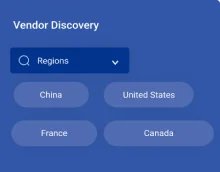
Analyse trade data for supply chain insights.
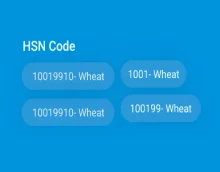
Leverage cost reports for smart savings

Enhance supply chain with partnerships.
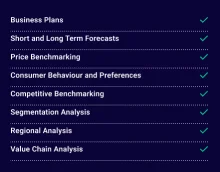
Gain insights to stay ahead and seize opportunities.
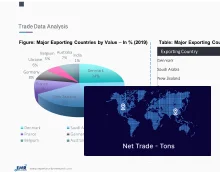
Get insights & trends for a competitive edge.
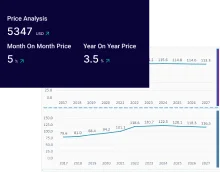
Track prices with detailed trend reports.

Analyse trade data for supply chain insights.

Leverage cost reports for smart savings

Enhance supply chain with partnerships.

Gain insights to stay ahead and seize opportunities.

Get insights & trends for a competitive edge.

Track prices with detailed trend reports.

Analyse trade data for supply chain insights.

Connect For More Information
Our expert team of analysts will offer full support and resolve any queries regarding the report, before and after the purchase.
Our expert team of analysts will offer full support and resolve any queries regarding the report, before and after the purchase.
We employ meticulous research methods, blending advanced analytics and expert insights to deliver accurate, actionable industry intelligence, staying ahead of competitors.
Our skilled analysts offer unparalleled competitive advantage with detailed insights on current and emerging markets, ensuring your strategic edge.
We offer an in-depth yet simplified presentation of industry insights and analysis to meet your specific requirements effectively.



Australia
63 Fiona Drive, Tamworth, NSW
+61-448-061-727
India
C130 Sector 2 Noida, Uttar Pradesh 201301
+91-723-689-1189
Philippines
40th Floor, PBCom Tower, 6795 Ayala Avenue Cor V.A Rufino St. Makati City,1226.
+63-287-899-028, +63-967-048-3306
United Kingdom
6 Gardner Place, Becketts Close, Feltham TW14 0BX, Greater London
+44-753-713-2163
United States
30 North Gould Street, Sheridan, WY 82801
+1-415-325-5166
Vietnam
193/26/4 St.no.6, Ward Binh Hung Hoa, Binh Tan District, Ho Chi Minh City
+84-865-399-124
United States (Head Office)
30 North Gould Street, Sheridan, WY 82801
+1-415-325-5166
Australia
63 Fiona Drive, Tamworth, NSW
+61-448-061-727
India
C130 Sector 2 Noida, Uttar Pradesh 201301
+91-723-689-1189
Philippines
40th Floor, PBCom Tower, 6795 Ayala Avenue Cor V.A Rufino St. Makati City, 1226.
+63-287-899-028, +63-967-048-3306
United Kingdom
6 Gardner Place, Becketts Close, Feltham TW14 0BX, Greater London
+44-753-713-2163
Vietnam
193/26/4 St.no.6, Ward Binh Hung Hoa, Binh Tan District, Ho Chi Minh City
+84-865-399-124
Share